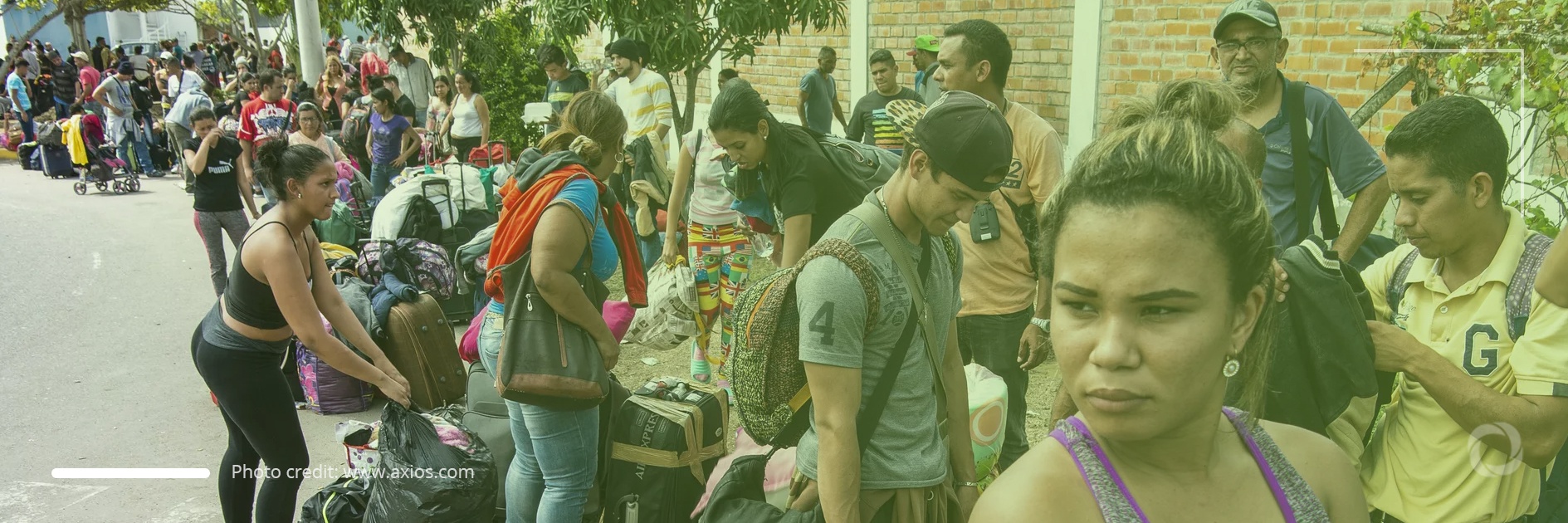As World Refugee Day is marked around the globe, Latin America is struggling with two concurrent refugee crises. One is taking place in Venezuela in the north and the other in Central America, as people constantly flee their countries to escape from hunger, poverty, violence, and precarious living conditions.
Apart from the geographical element, the two crises differ in terms of scope and destination point.
The migration crisis that originated in Venezuela was driven mainly by an economic collapse which triggered the country’s inability to provide basic services such as healthcare, education, and employment. Meanwhile, the Northern Triangle has witnessed a migration crisis because of a protracted security situation provoked by gang-related murders, kidnappings, extortion, and sexual violence which have been further fueled by climate change-driven extreme weather events such as hurricanes.
While Venezuelans were admitted to neighboring countries and some of these, such as Colombia and Peru, granted them legal status, many Central Americans were sent back or had to apply for admission at the Mexican-US border and wait in detention facilities as a result of the harsh migration policy of the former US President, Donald Trump. Migration from Central America is not as high as from Venezuela.
Venezuelans leave their country due to the precarious living conditions there, hyperinflation, unemployment, and a lack of food, medicines, and essential services. According to a survey conducted by the Venezuelan Observatory of Food Security and Nutrition (OVSAN), only 9% of Venezuelan households enjoy food security. Another survey conducted in 2019, i.e. before the pandemic, by Catholic University Andres Bello, found that 96% of Venezuelans were living in poverty and 79% in extreme poverty. Between 2013 and 2019 Venezuela saw a 70% decrease in GDP.
At the same time, violence caused by drug cartels, rising levels of poverty, and natural hazards have prompted over 2 million people to flee the Northern Triangle of Central America since 2014, according to the US-based think tank, the Council on Foreign Relations. The migration NGO, International Rescue Committee (IRC), said that in 2019 around 709,000 people fled from the region and another 139,000 in 2020. However, in recent months the number of refugees from the region has been hitting record highs. In May 2021 alone the U.S. Customs and Border Protection reported that 180,034 people had reached the U.S.-Mexico border.
In 2020, around 70% of Hondurans lived in poverty. In June 2021, the Integrated Food Security Phase Classification assessed that at least 3.5 million people of Guatemala’s 18 million population were facing acute food insecurity. The Chilean-based think-tank, the Economic Commission for Latin America and the Caribbean (CEPAL), estimated that in 2020 almost 60% of Guatemalans lived in poverty and 21.8% in extreme poverty. As far as El Salvador is concerned, the level of poverty at the end of 2020 was 35.9% according to data provided by the Inter-American Bank of Development. Aside from poverty, the region is also known to be one of the most dangerous to live in. In 2020, the number of femicides in El Salvador increased by 43% and in Guatemala by 19%. In addition, at the end of 2020, Central America was struck by two hurricanes, Eta and Iota, which affected about 7 million people, destroying crops and livelihoods. IRC estimates that about 30,000 people from the region need to be resettled and this issue must be addressed soon.
Venezuelans are admitted to Latin American countries but they require more assistance than the hosting states are able to grant them. Thus, the hope is that the international community will provide funds to address their most urgent needs. With regard to Central Americans, the new U.S. administration appears to be reluctant to allow more people into the country but it has decided to increase development aid in the region to boost employment, improve security and fight corruption.

